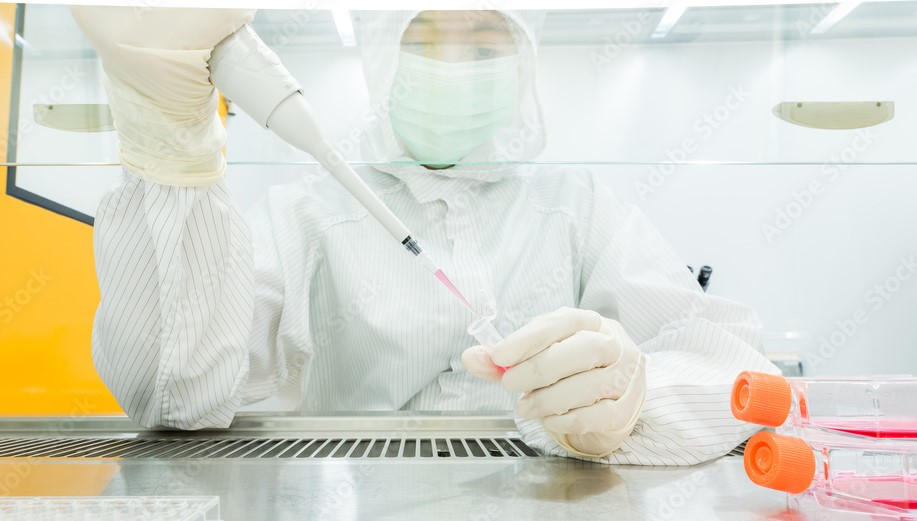
Biological Agents include bacteria, viruses, prions, clinical and biological samples, animals and mammalian cell lines. All first time use of a Biological Agent in research must be notified to/approved by the University Safety, Health and Welfare Steering Committee. The Head of School/Function is responsible for ensuring that biological agents risk assessments are completed and reviewed as necessary.
- Classification of Biological Agents
- Biological Agents Legislation and Codes of Practice
- Biological Agents FAQ
- Risk Assessment
- Biological Risk Assessment Template
- Personal Protective Equipment
- Occupational Exposure Lists
- Autoclaves
- Biological Safety Cabinets
- Good Occupational Hygiene
Emergency First Response Procedure
BIOLOGICAL AGENTS SPILL/RELEASE
This may be a spill or release of a biological agent inside a building or to the environment. Minor and low risk spills may be managed by staff members who are familiar with spill protocols in their School/Function. Large spills/releases may require the evacuation of the building. Depending on the nature and extent of the incident, assistance may be brought in from other public support agencies or specialised contractors. The following are general guidelines only and response procedures will depend not only on the quantity involved but also the hazardous characteristics of the agent and where the spill/release has occurred. In all situations, personal protection is of primary importance and clean-up of spills is secondary. All Schools/Functions working with biological agents are required to develop and practice their own site-specific emergency procedures.
DEFINITION
Minor Spill Major Spill
Does not spread rapidly Spreads rapidly
Does not endanger people Presents an exposure hazard (e.g. inhalation, skin absorption)
Does not endanger the environment Endangers people or environment
Minor Spill (low risk confined to a small area)
• Assess the scene. Determine what was spilled/released and what has been contaminated;
• Wear/use appropriate personal protective clothing and equipment (PPE);
• Wipe up spill with paper towel;
• Discard towel as biohazardous waste;
• Any glassware should be picked up with forceps or a disposable scoop and treated as hazardous sharps waste; and
• Clean surface with suitable disinfectant;
Major Spill (significant splashing or aerosol generation; medium/large)
• Assess the risk and determine the appropriate response; i.e. (i) clean up or (ii) evacuate and contact specialists;
o Clean Up
• Refer to School/Function spill procedure;
• If safe to do so, contain the spill using appropriate spill kit;
• Wear/use appropriate personal protective clothing and equipment (PPE);
• Ventilate the area if appropriate;
• Remove contaminated clothing;
• Wash all exposed skin;
• Place warning sign on door;
• Secure area;
• Allow aerosols to settle for 30 minutes before re-entering;
• Gather suitable cleaning supplies and PPE before re-entering area;
• Thoroughly disinfect and clean the area;
• Dispose of biohazardous waste in accordance with School/Function procedures;
• Notify Head of School/Function;
o Evacuate and contact specialists
• Raise the alarm if needed;
• Evacuate area/building and close door;
• Secure area;
• Contact Emergency Services (999 or 112) (if calling from a campus landline you may need to dial “0” for an outside line);
• Remove contaminated clothing;
• Wash all exposed skin;
• Notify Head of School/Function;
• Await direction from Head of School/Function or Silver Team.
Response to Biological Contamination of Individual
• Scene Safety! Alert people in area of danger;
• Remove contaminated person from area of exposure (ONLY IF SAFE);
• Otherwise, wait for emergency personnel to arrive – dial 999 or 112 (if calling from a campus landline you may need to dial “0” for an outside line);
• Do not touch the person until they are decontaminated unless you can safely protect yourself against exposure with personal protective clothing and equipment (PPE)
Decontamination (EYES):
• Flush with copious amounts of water for at least 20 minutes. Use eyewash station or tap water or sterile eye wash from the first-aid kit.
Decontamination (SKIN/BODY):
• Remove contaminated clothing and footwear and flush area with copious amounts of water via emergency shower/tap water for at least 20 minutes;
• After decontamination, keep individual warm until arrival of Emergency Services;
• Ensure the container label and any other critical information is ready for Emergency Services personnel.
Complete an Accident Report/Near Miss/Dangerous Occurrence Form as appropriate.
